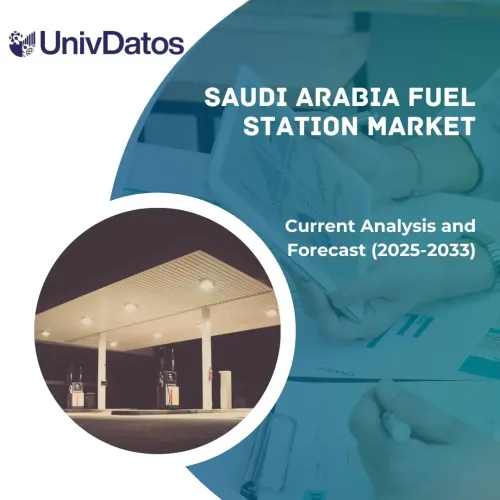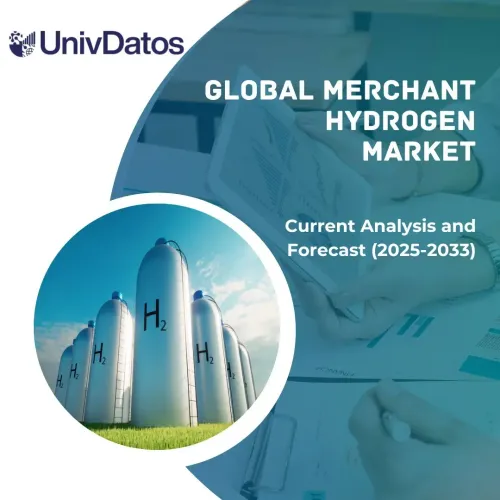- Strona główna
- O nas
- Branża
- Usługi
- Czytanie
- Kontakt
Rynek paliw syntetycznych: Bieżąca analiza i prognoza (2023-2030)
Nacisk na rodzaj paliwa (amoniak, paliwo syntetyczne, metanol i inne); źródło odnawialne (fotowoltaika słoneczna, wiatr i hybrydowe); region/kraj.
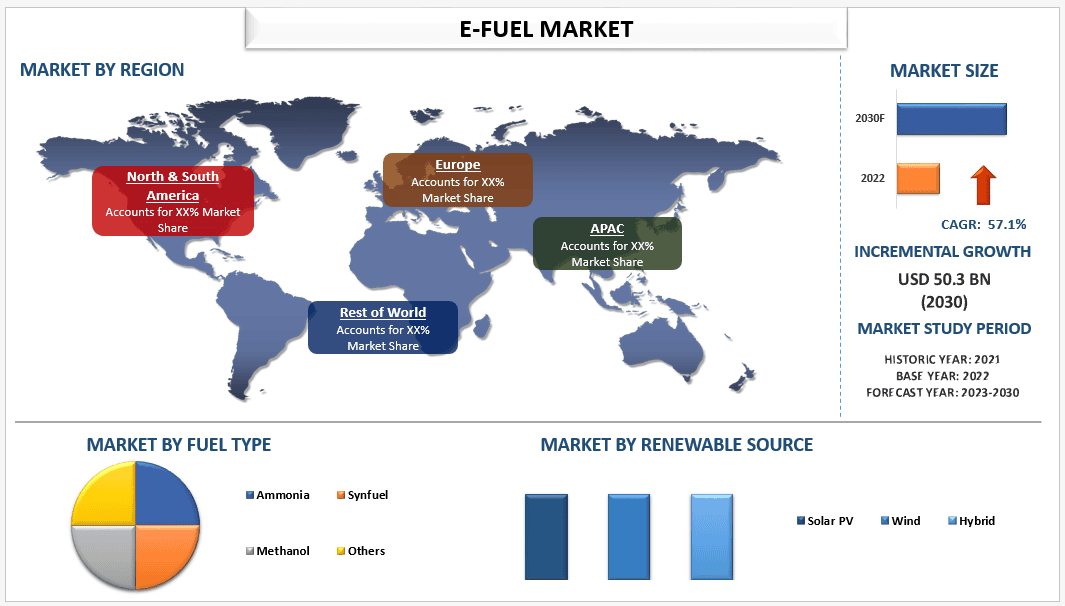
Oczekuje się, że rynek e-paliw będzie rósł w silnym tempie CAGR wynoszącym 57,1% w okresie prognozowania 2023-2030. E-paliwa, znane również jako elektropaliwa, to paliwa syntetyczne produkowane z odnawialnych źródeł energii, takich jak energia słoneczna lub wiatrowa, przy użyciu procesu zwanego power-to-liquid (PtL). Mogą one występować w postaci gazu lub cieczy i obejmują e-Synfuel, e-kerosen i e-metanol. E-paliwa są uważane za neutralną pod względem emisji dwutlenku węgla alternatywę dla tradycyjnych paliw kopalnych, ponieważ dwutlenek węgla emitowany podczas ich spalania jest równoważony przez węgiel wychwytywany podczas ich produkcji. Mogą być stosowane w istniejących silnikach spalinowych bez konieczności wprowadzania modyfikacji, co czyni je potencjalnym zamiennikiem benzyny lub oleju napędowego w sektorze transportowym. Można je mieszać z konwencjonalnymi paliwami w dowolnych proporcjach i stosować w sposób neutralny dla klimatu na całym świecie.
Globalny rynek e-paliw jest napędzany przez kilka kluczowych czynników, w tym rosnący popyt na zrównoważony transport, postęp technologiczny, wzrost inwestycji w czystą energię i względy bezpieczeństwa energetycznego. Obserwuje się zwiększone skupienie na zrównoważonym transporcie, a e-paliwa są postrzegane jako sposób na dekarbonizację trudnych do zelektryfikowania sektorów, takich jak transport i lotnictwo. Rynek jest wciąż w początkowej fazie rozwoju i powstało tylko kilka zakładów produkujących e-paliwo w małych ilościach. Jednak szybkie inwestycje różnych firm i organizacji rządowych znacząco pobudziły ten niszowy rynek, czyniąc go jednym z najszybciej rozwijających się rynków energii zrównoważonej w okresie prognozowania.
Niektórzy z głównych graczy działających na rynku to Norsk E-Fuel, Sunfire GmbH, Siemens Energy, Advanced Chemical Technologies¸ BASF SE¸ Carbon Recycling International, Enerkem, Fraunhofer, OCI N.V. i Uniper SE. Gracze ci podjęli szereg fuzji i przejęć wraz z partnerstwami, aby ułatwić klientom dostęp do zaawansowanych technologicznie i innowacyjnych produktów/technologii.
Informacje przedstawione w raporcie
„Wśród rodzajów paliw kategoria E-Amoniak będzie rosła ze znaczącym CAGR w okresie prognozowania”
Na podstawie rodzaju paliwa rynek e-paliw dzieli się na amoniak, paliwo syntetyczne, metanol i inne. Segment paliw syntetycznych zdobył większość udziałów w rynku e-paliw i oczekuje się, że wykaże znaczny wzrost w okresie prognozowania. Większość projektów dotyczących e-paliw dotyczy amoniaku, ponieważ głównym motorem produkcji produktów na bazie wodoru przy użyciu elektrolitycznego wodoru są zastosowania przemysłowe amoniaku, a nie jego potencjalne wykorzystanie jako paliwa. Przemysł nawozowy jest jednym z największych zastosowań, w których ten amoniak jest wykorzystywany. Około jedna czwarta mocy projektów mających na celu produkcję e-amoniaku jest skierowana konkretnie na jego wykorzystanie w przemyśle nawozowym.
„Wśród źródeł odnawialnych kategoria Solar PV będzie rosła ze znaczącym CAGR w okresie prognozowania”
Na podstawie źródeł odnawialnych rynek e-paliw dzieli się na Solar PV, wiatr i hybrydę. Segment hybrydowy zdobył większość udziałów w rynku e-paliw i oczekuje się, że wykaże znaczny wzrost w okresie prognozowania. Solar PV zdominowało wzrost w sektorze e-paliw, ponieważ można je wdrażać na większej liczbie obszarów w porównaniu z energią wiatrową i jest to jeden z najbardziej opłacalnych sposobów wytwarzania energii odnawialnej. Rządy na całym świecie wprowadziły różne polityki i inicjatywy promujące energię słoneczną w swoim regionie. Według IEA, zainstalowana moc energii słonecznej PV ma przekroczyć moc węgla do 2027 r., stając się największą na świecie. Pomimo obecnych wyższych kosztów inwestycyjnych spowodowanych podwyższonymi cenami surowców, wielkoskalowa energia słoneczna PV jest najtańszą opcją dla nowej produkcji energii elektrycznej w znacznej większości krajów na całym świecie.
Zakres raportu rynkowego dotyczącego e-paliw
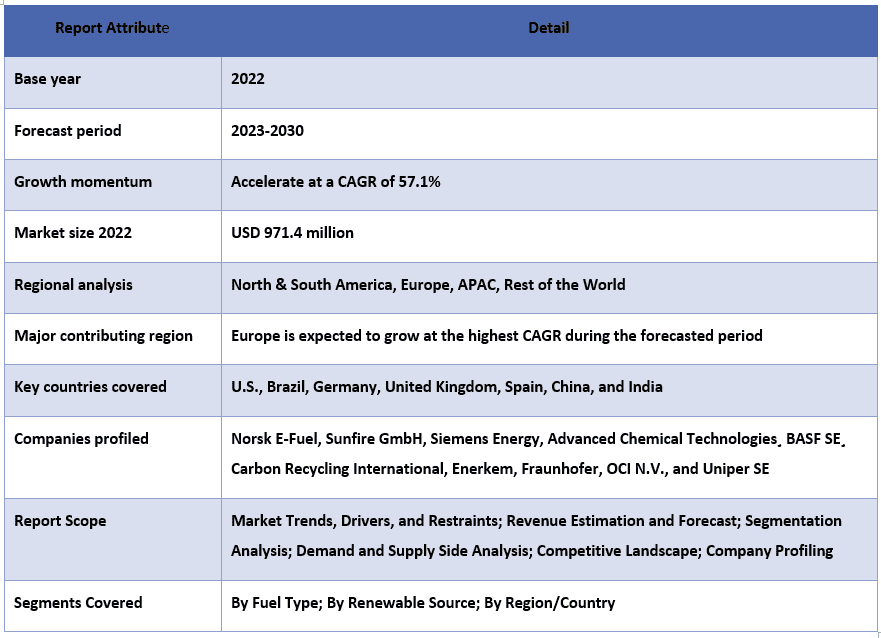
„Europa będzie rosła z wysokim CAGR w nadchodzących latach”
Europa zdobyła większość udziałów w rynku e-paliw i oczekuje się, że będzie świadkiem wpływowego CAGR w prognozowanym okresie. Wzrost wynika ze wzrostu funduszy na czystą energię, promocji e-paliw i nadchodzących zakładów w Rosji, Niemczech, Hiszpanii, Szwecji, Norwegii, Finlandii, Danii, Islandii, Austrii i Szwajcarii. Niemcy zdobyły znaczący udział w rynku e-paliw ze względu na różne zakłady e-paliw, a także ogromne inwestycje w sektorze energii odnawialnej. Region ten jest również siedzibą różnych firm zajmujących się e-paliwami, takich jak Norsk E-Fuel. Norsk E-Fuel jest jednym z największych producentów e-paliw na świecie i dąży do produkcji 250 milionów litrów e-paliwa do 2030 roku. Ich grupą docelową jest przemysł lotniczy, a firma znajduje się w Norwegii. Firma planuje budowę Alpha Plant w Mosjøen/Nesbruket, gmina Vefsn, Norwegia, o zdolności produkcyjnej 50 milionów litrów rocznie, która ma rozpocząć pełną produkcję do 2026 roku i będzie jednym z największych zakładów w regionie.
Powody, dla których warto kupić ten raport:
- Badanie obejmuje analizę wielkości rynku i prognozowanie, zweryfikowane przez uwierzytelnionych kluczowych ekspertów branżowych.
- Raport przedstawia szybki przegląd ogólnej kondycji branży na pierwszy rzut oka.
- Raport obejmuje dogłębną analizę wybitnych podmiotów z branży, ze szczególnym uwzględnieniem kluczowych danych finansowych, portfeli produktów, strategii ekspansji i najnowszych wydarzeń.
- Szczegółowe badanie czynników napędzających, ograniczeń, kluczowych trendów i możliwości występujących w branży.
- Badanie kompleksowo obejmuje rynek w różnych segmentach.
- Dogłębna analiza branży na poziomie regionalnym.
Opcje dostosowania:
Globalny rynek e-paliw można dodatkowo dostosować zgodnie z wymaganiami lub dowolnym innym segmentem rynku. Poza tym, UMI rozumie, że możesz mieć własne potrzeby biznesowe, dlatego zachęcamy do kontaktu z nami, aby otrzymać raport, który w pełni odpowiada Twoim wymaganiom.
Spis treści
Metodologia Badawcza Analizy Rynku E-Paliw (2023-2030)
Analiza historycznego rynku, szacowanie obecnego rynku i prognozowanie przyszłego rynku globalnego rynku E-Paliw były trzema głównymi krokami podjętymi w celu stworzenia i analizy adopcji E-Paliw w głównych regionach na świecie. Przeprowadzono wyczerpujące badania wtórne w celu zebrania historycznych danych rynkowych i oszacowania obecnej wielkości rynku. Po drugie, aby zweryfikować te spostrzeżenia, wzięto pod uwagę liczne ustalenia i założenia. Ponadto przeprowadzono wyczerpujące wywiady pierwotne z ekspertami branżowymi w całym łańcuchu wartości globalnego rynku E-Paliw. Po założeniu i walidacji danych rynkowych poprzez wywiady pierwotne, zastosowaliśmy podejście odgórne/oddolne do prognozowania całkowitej wielkości rynku. Następnie przyjęto metody podziału rynku i triangulacji danych, aby oszacować i przeanalizować wielkość rynku segmentów i podsegmentów branży, których to dotyczy. Szczegółowa metodologia jest wyjaśniona poniżej:
Analiza Historycznej Wielkości Rynku
Krok 1: Dogłębne Studium Źródeł Wtórnych:
Przeprowadzono szczegółowe badanie wtórne w celu uzyskania historycznej wielkości rynku E-Paliw poprzez wewnętrzne źródła firmy, takie jak raporty roczne i sprawozdania finansowe, prezentacje wyników, komunikaty prasowe itp., oraz źródła zewnętrzne, w tym czasopisma, wiadomości i artykuły, publikacje rządowe, publikacje konkurencji, raporty sektorowe, bazy danych stron trzecich i inne wiarygodne publikacje.
Krok 2: Segmentacja Rynku:
Po uzyskaniu historycznej wielkości rynku E-Paliw przeprowadziliśmy szczegółową analizę wtórną w celu zebrania historycznych spostrzeżeń rynkowych i udziałów dla różnych segmentów i podsegmentów dla głównych regionów. Główne segmenty zawarte w raporcie to Rodzaj Paliwa i Źródło Odnawialne. Ponadto przeprowadzono analizy na poziomie krajowym w celu oceny ogólnej adopcji modeli testowania w danym regionie.
Krok 3: Analiza Czynnikowa:
Po uzyskaniu historycznej wielkości rynku różnych segmentów i podsegmentów przeprowadziliśmy szczegółową analizę czynnikową w celu oszacowania obecnej wielkości rynku E-Paliw. Ponadto przeprowadziliśmy analizę czynnikową przy użyciu zmiennych zależnych i niezależnych, takich jak Rodzaj Paliwa i Źródło Odnawialne rynku E-Paliw. Przeprowadzono dokładną analizę scenariuszy popytu i podaży, biorąc pod uwagę najważniejsze partnerstwa, fuzje i przejęcia, ekspansję biznesową i wprowadzenie produktów na rynek w sektorze rynku E-Paliw na całym świecie.
Szacunek Obecnej Wielkości Rynku i Prognoza
Określenie Obecnej Wielkości Rynku: Na podstawie użytecznych spostrzeżeń z powyższych 3 kroków doszliśmy do obecnej wielkości rynku, kluczowych graczy na globalnym rynku E-Paliw i udziałów rynkowych segmentów. Wszystkie wymagane udziały procentowe i podziały rynku zostały określone przy użyciu wspomnianego powyżej podejścia wtórnego i zostały zweryfikowane poprzez wywiady pierwotne.
Szacowanie i Prognozowanie: Do szacowania rynku i prognoz przypisano wagi różnym czynnikom, w tym czynnikom napędzającym i trendom, ograniczeniom i możliwościom dostępnym dla interesariuszy. Po przeanalizowaniu tych czynników zastosowano odpowiednie techniki prognozowania, tj. podejście odgórne/oddolne, aby dojść do prognozy rynkowej na rok 2030 dla różnych segmentów i podsegmentów na głównych rynkach na całym świecie. Metodologia badawcza przyjęta do oszacowania wielkości rynku obejmuje:
- Wielkość rynku branży pod względem przychodów (USD) i stopę adopcji rynku E-Paliw na głównych rynkach krajowych
- Wszystkie udziały procentowe, podziały i rozbicia segmentów i podsegmentów rynku
- Kluczowi gracze na globalnym rynku E-Paliw pod względem oferowanych produktów. Ponadto strategie rozwoju przyjęte przez tych graczy, aby konkurować na szybko rozwijającym się rynku
Walidacja Wielkości i Udziału Rynku
Badania Pierwotne: Przeprowadzono dogłębne wywiady z kluczowymi liderami opinii (KOL), w tym z kadrą kierowniczą wyższego szczebla (CXO/Wiceprezesi, Szefowie Sprzedaży, Szefowie Marketingu, Szefowie Operacyjni, Szefowie Regionalni, Szefowie Krajowi itp.) w głównych regionach. Następnie podsumowano wyniki badań pierwotnych i przeprowadzono analizę statystyczną w celu udowodnienia postawionej hipotezy. Dane wejściowe z badań pierwotnych zostały skonsolidowane z wynikami wtórnymi, przekształcając w ten sposób informacje w użyteczne spostrzeżenia.
Podział Uczestników Badań Pierwotnych w Różnych Regionach
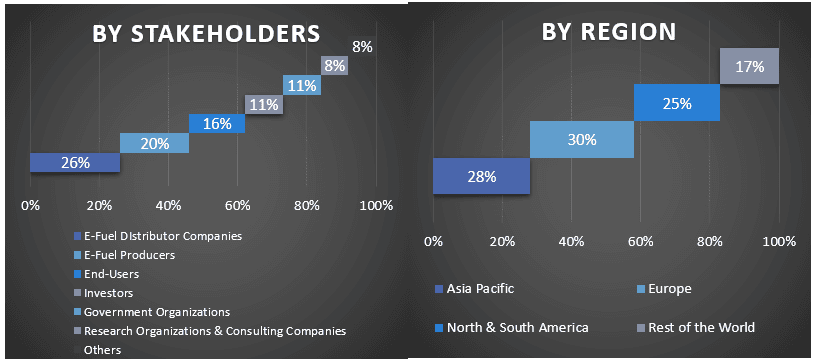
Inżynieria Rynkowa
Zastosowano technikę triangulacji danych, aby ukończyć ogólne oszacowanie rynku i dojść do precyzyjnych danych statystycznych dla każdego segmentu i podsegmentu globalnego rynku E-Paliw. Dane zostały podzielone na kilka segmentów i podsegmentów po przestudiowaniu różnych parametrów i trendów w obszarach Rodzaju Paliwa i Źródła Odnawialnego na globalnym rynku E-Paliw.
Główny Cel Globalnego Badania Rynku E-Paliw
W badaniu wskazano obecne i przyszłe trendy rynkowe globalnego rynku E-Paliw. Inwestorzy mogą uzyskać strategiczne spostrzeżenia, aby oprzeć swoje decyzje inwestycyjne na analizie jakościowej i ilościowej przeprowadzonej w badaniu. Obecne i przyszłe trendy rynkowe określiły ogólną atrakcyjność rynku na poziomie regionalnym, zapewniając platformę dla uczestników przemysłu do wykorzystania niewykorzystanego rynku, aby skorzystać z przewagi pioniera. Inne ilościowe cele badań obejmują:
- Analiza obecnej i prognozowanej wielkości rynku E-Paliw pod względem wartości (USD). Ponadto analiza obecnej i prognozowanej wielkości rynku różnych segmentów i podsegmentów
- Segmenty w badaniu obejmują obszary Rodzaju Paliwa i Źródła Odnawialnego
- Definiowanie i analiza ram regulacyjnych dla branży E-Paliw
- Analiza łańcucha wartości związanego z obecnością różnych pośredników, wraz z analizą zachowań klientów i konkurentów w branży
- Analiza obecnej i prognozowanej wielkości rynku E-Paliw dla głównego regionu
- Główne kraje regionów badane w raporcie obejmują Azję i Pacyfik, Europę, Amerykę Północną i Resztę Świata
- Profile firm na rynku E-Paliw i strategie rozwoju przyjęte przez uczestników rynku w celu utrzymania się na szybko rozwijającym się rynku
- Dogłębna analiza branży na poziomie regionalnym
Najczęściej zadawane pytania FAQ
P1: Jaka jest obecna wielkość rynku i potencjał wzrostu globalnego rynku e-paliw?
P2: Jakie są czynniki napędzające wzrost globalnego rynku e-paliw?
P3: Który segment ma największy udział w globalnym rynku e-paliw pod względem surowca?
P4: Jakie są wschodzące technologie i trendy na globalnym rynku E-paliw?
P5: Który region zdominuje globalny rynek e-paliw?
P6: Kim są kluczowi gracze działający na globalnym rynku E-Paliw?
Powiązane Raporty
Klienci, którzy kupili ten przedmiot, kupili również




